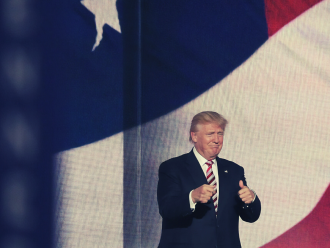After what proved a robust start to 2023, with inflation gradually easing, some markets returning double-digits and bond yields reaching 15-year highs, investors are feeling confident that the risk of recession is receding.
Drawing on the insights of portfolio managers, research analysts and economists, a survey by Natixis Investment Managers reveals that half rate recession as a low risk in the second half of the year.
It reveals that for the remainder of 2023 just 6% of investors and strategists believe a recession is “inevitable”, 53% say there is a “distinct possibility”, while 9% think recession is “highly unlikely”.
Although one could see negatives, as well as positives, in these numbers.
Furthermore, the views are not all positive: investors still maintain a level of caution that market headwinds are intensifying with an uncertain picture for the second half emerging.
As part of that cautionary tone, nearly three quarters (72%) are concerned that inflation may linger longer than expected and 38% believe rates could stay high for longer than anticipated, as 66% also worry about corporate earnings, finds the mid-year survey.
There is no doubt that on the back of 2022, the first half of 2023 surprised many.
In a survey in November last year, 59% of institutional investors believed a recession in 2023 was “inevitable” with 54% seeing it as “absolutely necessary” to curb inflation.
Solid market
That outlook has now shifted. And the reality has proved different: markets delivered solid returns, bonds generated attractive yields and inflation began to gradually ease around the world.
As part of this, markets rallied in the first half of the year, largely due to the re-emergence of tech.
Nasdaq delivered returns of 30% – the best first half in the index’s 52-year history.
The tech rally, driven by excitement around artificial intelligence (AI), also helped the S&P500 gain around 15%.
In Japan, corporate reforms and a focus on sustainable growth saw the Nikkei return 27.9% by June 30 – the biggest gain in 33 years.
However, none of the investors surveyed expect the tech rally to intensify.
Less than a third (31%) expect it to “continue steadily” and 6% of investors think the “bubble will burst”, so expectations should remain realistic.
And half believe equities more generally will cool off in the second half and prices will dip to reflect the “fundamentals”.
Geopolitical noise
Although geopolitics (72%) and central bank policy (72%) draw the strongest consensus when it comes to headwinds.
That said, a quarter (25%) of investors do not think geopolitics will impact markets in the second half of the year – instead calling geopolitical issues “noise”.
When considering the headwinds and opportunities, 34% of investors and strategists say the US is best positioned for the rest of the year, and 22% think either Japan or emerging markets – excluding China – will be the winner.
Just 16% think Europe will be the leading market, while only 6% believe it will be China. None of the strategists are backing the UK.
There is strong consensus that large caps (81%) will outperform small caps (19%), in part due to tighter credit standards set in the wake of the first quarter’s banking crisis.
They are also torn between whether growth or value will outperform to year end, seeing a 50/50 split.
Corporate earnings are a potential headwind for 66%, however, 25% are optimistic and say earnings may act as a catalyst in the second half of the year.
Investors are also split on the outlook for consumer spending as half worry a slowdown in spending will serve as a headwind, while 28% believe consumer spending will increase providing a catalyst for market growth.
Bonds are back
When it comes to the bond market, after 15 years of low and negative yields, yield returned in 2023.
As central banks hiked rates to the highest levels since the global financial crisis, investors took advantage. Yields on 10-year treasuries reached 3.8% in June as 10-year eurozone central bonds reached 3.2%.
Asked for their outlook on the second half: 47% think US treasury yields will come in at 3.5% to 4%; 41% see rates receding, leading 28% expecting 10-year treasuries to drop to the 3% to 3.5% range and 13% think rates could move to between 2.5% to 3%.
However, there are still concerns for fixed income investors: 72% worry inflation may linger longer than expected and 38% think rates could go higher than anticipated, while the same level believe they could stay high for longer than expected and 38% are worried about corporate defaults and downgrades.
Largely investors are not worried about consumer credit and the housing market, as only 13% say they are concerned, but 69% see central bank mistakes as a risk: 53% medium risk and 16% high risk.
With all things considered, 56% of those surveyed think long-duration bonds will outperform short-duration bonds by the end of 2023.





Comments